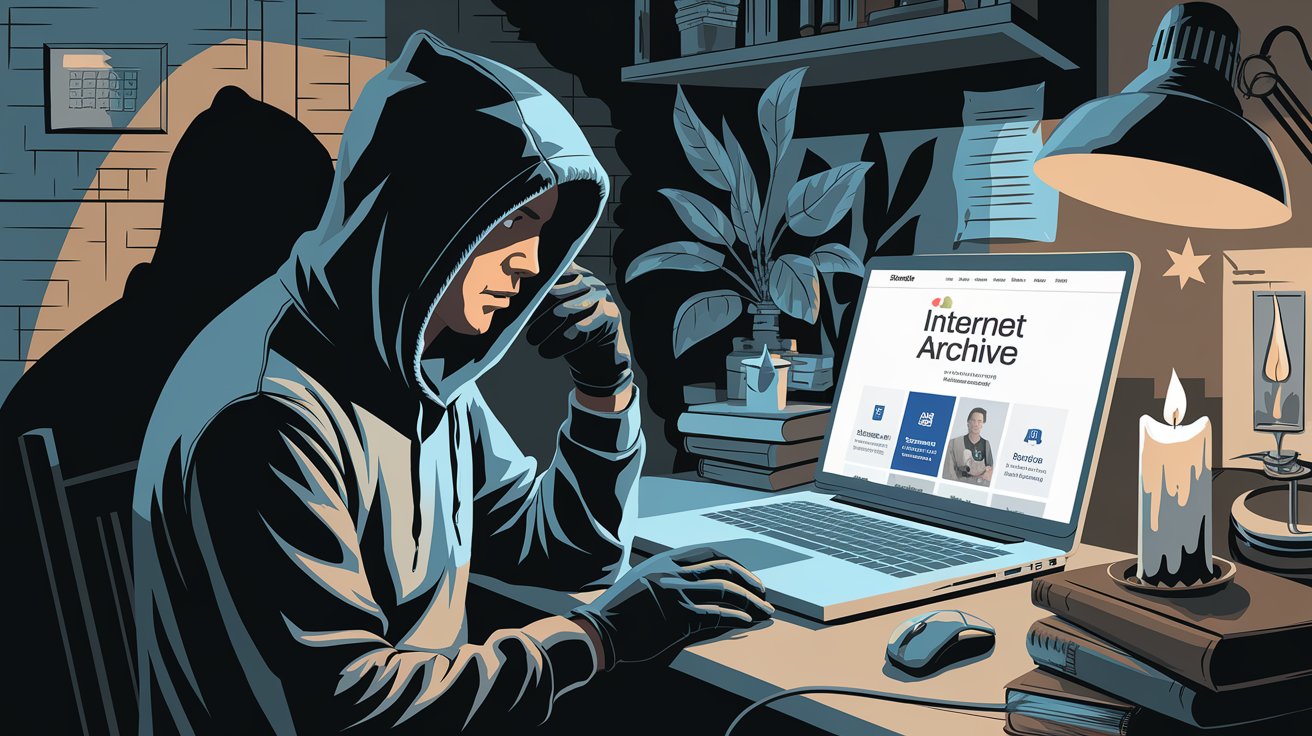The Internet Archive is more than just a digital library; it serves as a comprehensive repository for the Internet itself. Founded in 1996 by Brewster Kahle, its mission is to provide “Universal Access to All Knowledge.” This ambitious goal encompasses a wide range of digital media, from text and video to audio and images. It offers free access to an enormous collection of websites, books, music, and various media formats, enabling users to explore and research the digital world’s history.
Many people utilize the Wayback Machine, one of the archive’s most popular features, to view past versions of websites. This tool allows users to see how websites looked at different points in time, making it invaluable for researchers, historians, and anyone interested in the digital footprint of information over time. The Internet Archive also serves educators, students, and the general public, providing resources that are essential for learning and discovery.
In an era where knowledge is power, the Internet Archive plays a pivotal role in ensuring that this knowledge is preserved for future generations. However, with its growing user base comes increased scrutiny and the necessity for robust security measures to protect the data it collects.
The Breach Incident: What Happened?
The breach occurred when hackers exploited vulnerabilities in the Internet Archive’s security framework, gaining unauthorized access to sensitive user data. This incident was detected after suspicious activities were reported by security researchers who monitor the dark web for leaked information. Although the specific technical details of how the breach happened remain unclear, it serves as a cautionary tale for organizations relying on outdated security measures or overlooking potential vulnerabilities.
Upon discovery, the Internet Archive immediately initiated a comprehensive investigation to understand the extent of the breach and its impact on users. This involved auditing their security systems and protocols to prevent similar incidents in the future. The quick response from the Internet Archive demonstrates the importance of having a proactive approach to cybersecurity, as timely detection and response can significantly mitigate the damage caused by such breaches.
How Many Accounts Were Affected?
An astonishing 31 million accounts were compromised in this breach, highlighting the magnitude of the security failure. While it’s not confirmed whether all accounts were actively used, the scale is significant enough to cause alarm among users and stakeholders alike. Given the Internet Archive’s critical role in storing and preserving vast amounts of digital content, the exposure of such a large user base poses serious risks.
The sheer volume of affected accounts raises concerns not only about individual user security but also about the potential ripple effects on the Internet Archive’s operations and reputation. For users who rely on the Archive for access to educational resources, the breach could hinder their ability to utilize the platform confidently.
Details of the Exposed Information
The data exposed in the breach included usernames, email addresses, and hashed passwords. Hashing is a security technique that converts passwords into a fixed-length string of characters, making it difficult to reverse-engineer. However, if the hashing algorithm is outdated or weak, there is still a risk that attackers could crack these passwords. While sensitive financial information, like credit card details and personal communications, was not compromised, the exposure of email addresses and hash passwords can still lead to significant issues.
Cybercriminals can leverage the exposed information for phishing scams or other malicious activities. Phishing involves sending fraudulent messages that appear to be from a reputable source, tricking users into revealing personal information such as passwords or financial details. The breach has put many users at risk of falling victim to such schemes.
Additionally, it is important to recognize that the mere existence of compromised email addresses can lead to spam and other unsolicited communications, which can be both annoying and harmful.
How the Breach Was Discovered
The breach was discovered either through proactive monitoring by the Internet Archive’s security team or by external cybersecurity researchers. Quick detection was crucial in mitigating further damage, allowing the organization to act swiftly in securing compromised systems and notifying affected users. Transparency in communication about the breach is also vital for maintaining user trust. The Internet Archive’s decision to inform users promptly about the incident shows their commitment to user safety.
The ability to detect breaches quickly is a hallmark of effective cybersecurity strategies. Organizations need to invest in monitoring systems that can identify anomalies in their networks, signaling potential breaches before they escalate.
Potential Risks for the Affected Users
For users affected by the breach, the risks are multifaceted. First and foremost, if individuals use the same password across multiple platforms, they are at heightened risk of unauthorized access to those accounts. Cybercriminals often utilize information obtained from one breach to infiltrate other accounts, exploiting the tendency of users to reuse passwords.
Secondly, exposed email addresses can be exploited in phishing attacks. Cybercriminals may impersonate legitimate services, attempting to deceive users into revealing further sensitive information. This highlights the importance of vigilance and caution when interacting with emails or messages, especially those requesting personal information.
Moreover, even if passwords were hashed, attackers may still employ “credential stuffing” techniques, where they take stolen username-password pairs and try them on various platforms. This underscores the importance of using unique passwords for each account, as it significantly reduces the chances of multiple accounts being compromised.
Additionally, users should be aware of social engineering tactics, where attackers manipulate individuals into revealing confidential information. This can take many forms, including phone calls, text messages, or emails that appear trustworthy.
You should visit: Expand Google My Business Reach: A Complete Handbook
Response from the Internet Archive
In response to the breach, the Internet Archive took several immediate steps, including forcing password resets for all affected accounts and reinforcing security measures. They also communicated with their user base, providing detailed information about the breach and offering guidance on protecting personal information.
The organization’s proactive response reflects a commitment to user safety and transparency, which is crucial in retaining user trust following such incidents. The Internet Archive also likely engaged with cybersecurity experts to bolster their security infrastructure, ensuring that they are better prepared to prevent future breaches.
Moreover, user education is an essential component of their response. By informing users about the risks and best practices for online security, the Internet Archive empowers individuals to take charge of their safety in the digital realm.

Password Security Measures: What Users Should Do Next
To safeguard against potential threats following the breach, users should take immediate action:
- Change Passwords: Users should change their Internet Archive passwords as well as any other accounts that share the same login credentials. This is a crucial first step to prevent unauthorized access.
- Enable Two-Factor Authentication (2FA): If available, enabling 2FA adds an additional layer of security, requiring a second form of verification (like a code sent to your phone) before access is granted. This makes it much harder for attackers to gain access, even if they have your password.
- Monitor Accounts: Keep a close eye on bank statements and other sensitive accounts for unusual activity. Reporting unauthorized transactions quickly can help minimize damage.
- Use Password Managers: These tools can help generate and store strong, unique passwords for each account, reducing the temptation to reuse passwords. Many password managers also alert users if a website they use has been compromised.
- Stay Informed: Follow updates from the Internet Archive and cybersecurity news to remain aware of potential threats and how to mitigate them.
By adopting these practices, users can enhance their security and reduce the risk of falling victim to identity theft or unauthorized access.
Impact on the Internet Archive’s Reputation
The Internet Archive’s reputation is likely to take a hit due to the breach, especially as users weigh their trust in the platform. Users may feel uncertain about continuing to share their data with the organization, potentially affecting the Archive’s ability to attract donations and partnerships.
While the breach can lead to a loss of trust, how the Internet Archive manages this situation—through transparency, user education, and improved security—will play a crucial role in restoring that trust. The organization can view this incident as an opportunity to improve its security protocols and communicate its dedication to user safety.
Additionally, the Internet Archive might consider enhancing its engagement with the community to rebuild relationships and showcase its commitment to safeguarding user data. Building a reputation for transparency and accountability can help win back the trust of its user base.
How This Breach Reflects Broader Security Issues Online
The Internet Archive breach is part of a troubling trend where organizations of all sizes face significant cybersecurity threats. As cybercriminals become more sophisticated, the need for robust security practices is paramount. This incident highlights the vulnerabilities that even well-respected institutions face, emphasizing that no platform is completely safe from attacks.
Moreover, this breach reflects a broader issue within the digital ecosystem, where user data is increasingly valuable and targeted. It calls for a collective effort to enhance cybersecurity across the board, not just within individual organizations.
Best Practices for Online Security and Privacy
To navigate the digital landscape safely, consider implementing these best practices:
- Strong, Unique Passwords: Always use strong, unique passwords for each of your accounts. Avoid using easily guessable information such as birthdays or common phrases.
- Two-Factor Authentication (2FA): Enable 2FA wherever possible to add an extra layer of security to your accounts.
- Regular Updates: Keep your software, apps, and devices up to date to protect against known vulnerabilities. Many updates include security patches that are essential for protecting your data.
- Be Wary of Suspicious Links: Avoid clicking on unknown or suspicious links in emails and messages. Always verify the sender’s identity if something seems off.
- Regular Monitoring: Periodically check your accounts for unauthorized transactions or changes. Setting up alerts for significant account activity can help you respond quickly.
- Educate Yourself: Stay informed about the latest cybersecurity threats and trends. Knowledge is your best defense against potential attacks.
By adopting these practices, users can significantly reduce the likelihood of becoming victims of cyberattacks and protect their personal information more effectively.
Lessons Learned from the Breach
This incident serves as a critical learning opportunity for organizations and users alike. Companies must prioritize cybersecurity by conducting regular security audits, investing in advanced security technologies, and fostering a culture of cybersecurity awareness among employees and users.
Additionally, users must take responsibility for their online safety by adopting secure practices and staying informed about potential threats. This collaborative approach to cybersecurity can create a safer digital environment for everyone.
How Governments and Tech Companies Should Collaborate
To strengthen the digital landscape, it’s essential for governments and tech companies to collaborate on creating more robust cybersecurity laws. This could include mandating stronger encryption methods and requiring organizations to report breaches promptly to minimize damage. By working together, we can create a safer online environment that protects users’ data and fosters trust.
Governments can also provide incentives for companies to adopt best practices in cybersecurity and offer resources for education and training in this field. A collective effort is vital for establishing a standard of security that all organizations must meet to protect user data.
Also read: Verizon Home Internet: How to Maximize Your Internet Speed
Final Words:
The Internet Archive breach is a stark reminder of the vulnerabilities inherent in our digital lives. As we increasingly rely on online platforms for knowledge, communication, and transactions, the importance of cybersecurity cannot be overstated. Users must take proactive measures to protect themselves, while organizations must invest in security to safeguard user data. Together, we can foster a safer online ecosystem for everyone.
It’s critical to keep in mind that everyone must ensure our online safety while we traverse the digital realm. By educating ourselves, using best practices, and pressuring companies to improve their security, we make the internet a safer place for future generations.

Frequently Asked Questions
How can I secure my Internet Archive account moving forward?
Use a strong, unique password and enable two-factor authentication to enhance your account’s security.
What should I do if my account is compromised?
Change your password immediately, enable two-factor authentication, and monitor your accounts for unusual activity.
Is financial information safe from this breach?
Yes, the data breach did not expose financial information, but users should still exercise caution.
How can I tell if my email was part of a breach?
Check the Internet Archive notifications or use services like Have I Been Pwned to see if any known breaches include your email.
Will the Internet Archive be held legally accountable?
This depends on data protection laws in different jurisdictions. The Internet Archive will likely have to adhere to any regulations that apply.






